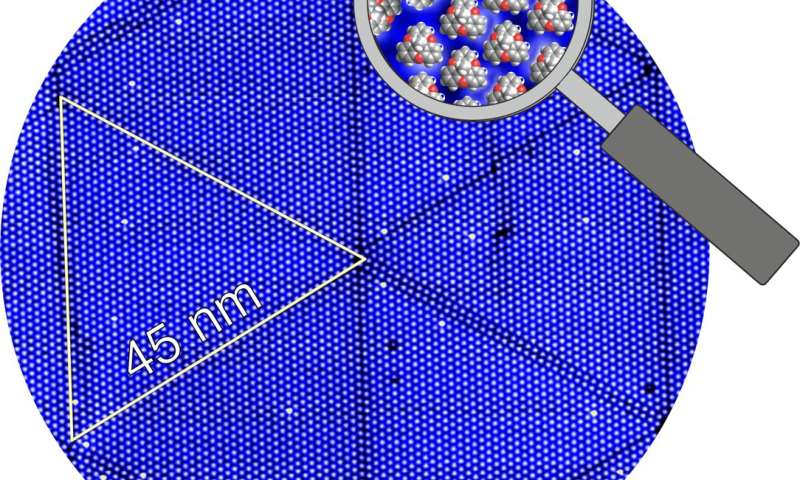Most technical functional units are built bit by bit
according to a well-designed construction plan. The components are
sequentially put in place by humans or machines. Life, however, is
based on a different principle. It starts bottom-up with molecular
self-assembly. The crystallization of sugar or salt are simple
examples of self-assembly processes, where almost perfect crystals
form from molecules that randomly move in a solution. To better
understand the growth of macroscopic structures from molecules, a
research team of physicists and chemists of Kiel University has
mimicked such processes with custom-made molecules. As recently
reported in the journal Angewandte Chemie they fabricated a variety
of patterns over a wide range of sizes including the largest
structures reported so far.




